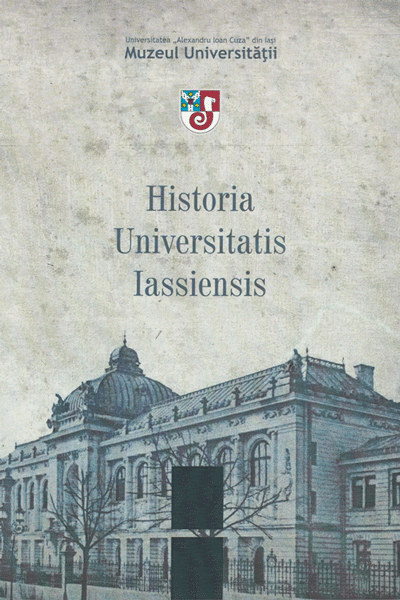Diplomatie culturelle et militantisme idéologique. L’Université de Iaşi et le milieu académique est-allemand à la fin des années ’50 et au début des années ‘60 du XXe siècle
Cultural Diplomacy and Ideological Militancy. University of Iaşi and the East-German Academic Environment in Late 1950s and Early 1960s
Author(s): Ionuţ NistorSubject(s): Cultural history, Diplomatic history, Political history, Social history, History of Communism
Published by: Editura Universităţii »Alexandru Ioan Cuza« din Iaşi
Keywords: culture; ideology; communism; diplomacy; University of Iasi;
Summary/Abstract: The instauration of the communist regime in Romania had direct and profound consequences on the educational system and on the academic environment in general. The imposition of the Soviet model in the organisation of the society and institutions, the need of the new regime to instruct and instal loyal people in key positions and to control in detail the scientific production and the didactic activity within the universities led to fractures in the normal development of the upper education institutions. The removal of undesirable professors from the didactic activity, the formation of a new “elite”, subservient to and controllable by the party, the unification and the Sovietisation of the educational curricula, the centralization and planning of the research activity represented phenomena that impacted on the University of Iaşi at the end of the 1940s and the beginning of the 1950s. Eespecially as from 1948, the new regime restricted exchanges with the foreign countries, either democratic or featuring a “popular democracy”. The lack of confidence in the professors formed by “the inter-war school” and the precariousness of the control exerted on the educational system and on the teaching staff led to prudence, maybe even fear, on behalf of the Communist leadership. The restriction of visits abroad is one symptom of the Communist leaders’ anxiety so as to possible sideslips and “contaminations” with “wrong ideas” of certain people, not having passed the loyalty and “engagement” tests. By the end of the 50s though, the Romanian regime was a more solid one compared to that of the 60s, displaying a functional and verified „apparatus” so as the travels abroad and the unbiased contact with the environments featuring “popular democracy” did not represent insurmountable issues anymore. Until the mid 1950s, the travels abroad of professors from Iaşi were quite rare. The situation changed in 1960, when the University signed the first direct collaboration agreements with external partners – the University of Pecs (People’s Republic of Hungary) and “Friederich Schiller” University of Jena (German Democratic Republic). Within this framework, the relations with universities from GDR and with the University of Jena in particular were privileged. The Convention replaced the occasional exchanges with rigorously regulated bilateral liaisons that offered the possibility of institutionalised relations, though limited to a restricted number of disciples, particularly from the domain of exact sciences. The high level of the contacts maintained with the GDR may be attributed to this collaboration agreement but also to the political interest assumed in this stage by the USSR and the “popular democracies”, i.e. to de-isolate and legitimate the new German state.
Journal: Historia Universitatis Iassiensis
- Issue Year: 2010
- Issue No: 01
- Page Range: 151-166
- Page Count: 16
- Language: Romanian

